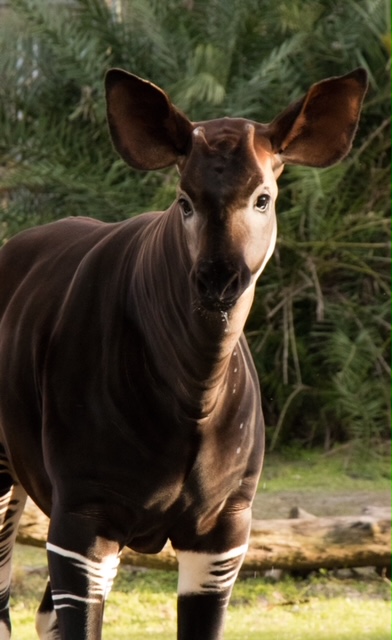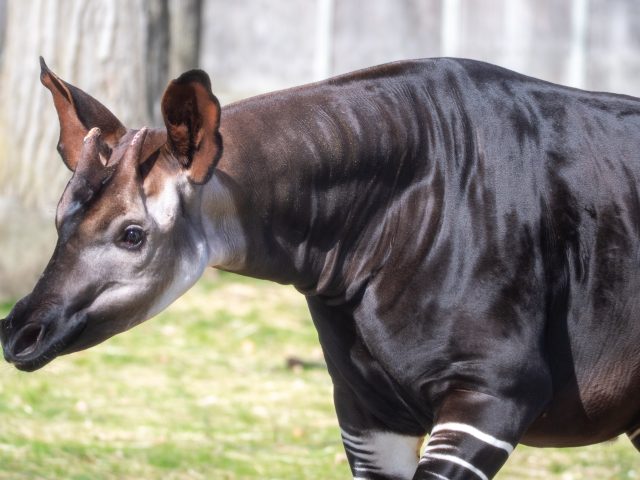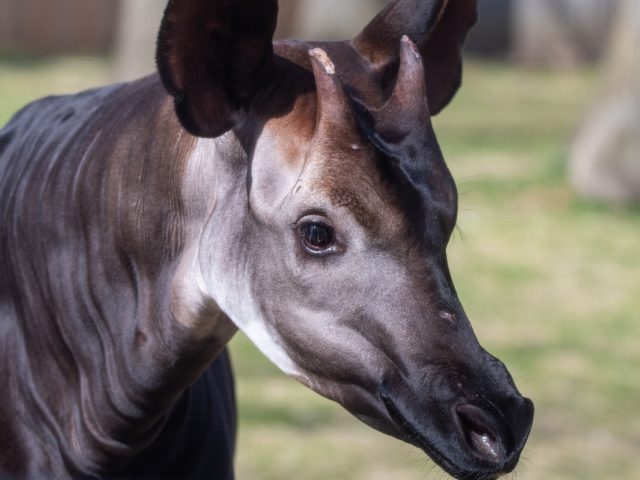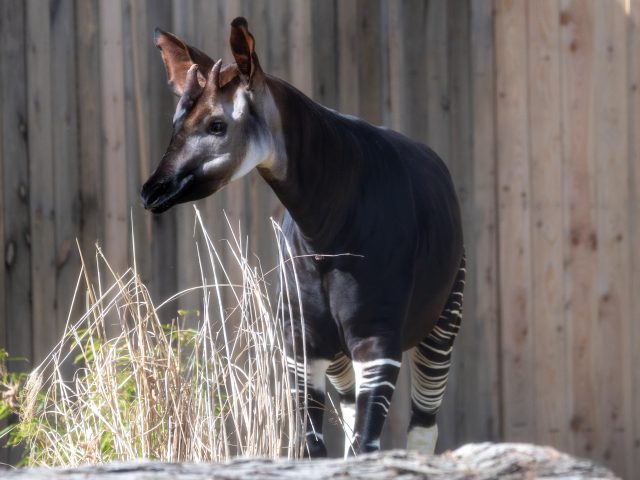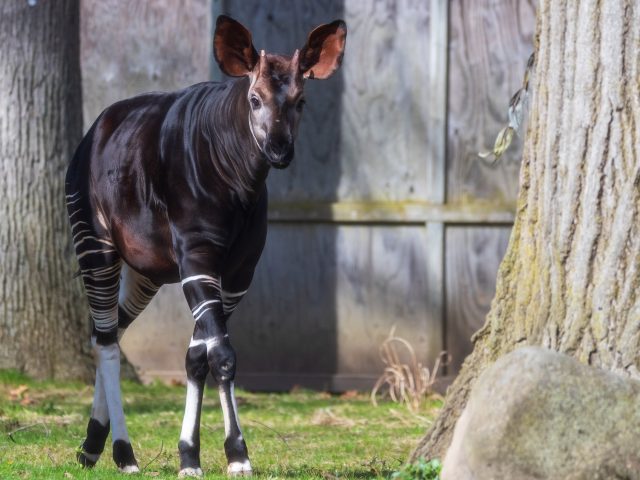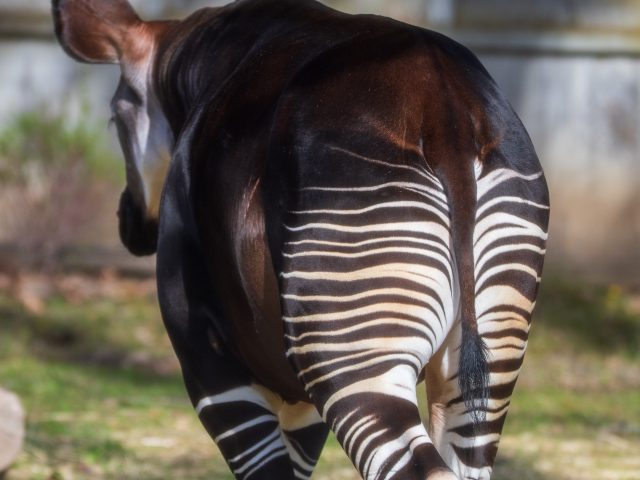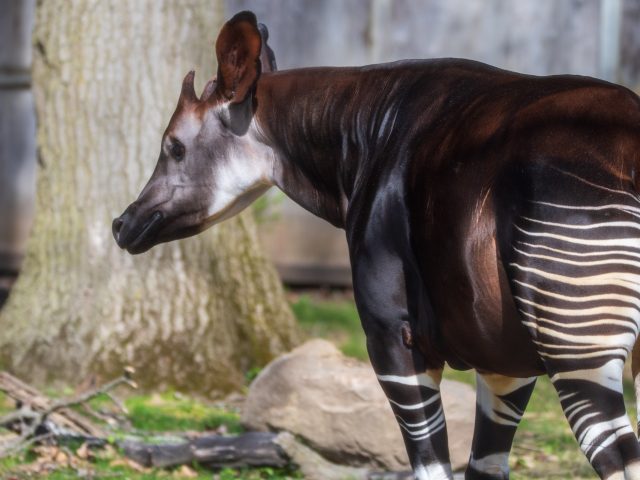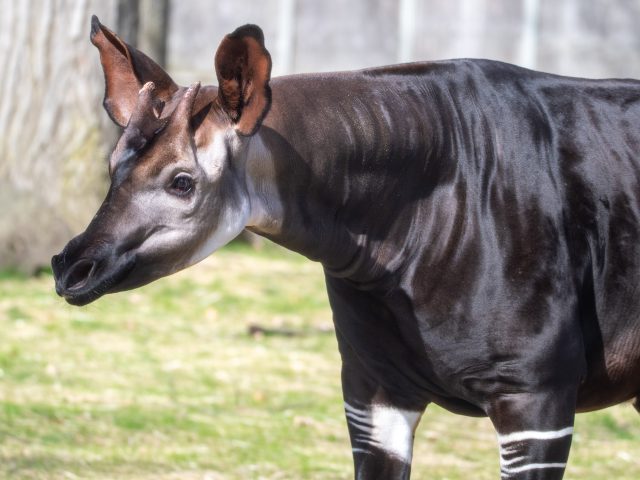Range
Democratic Republic of the Congo, Africa
Habitat
Closed, high-canopy forests
Behavior
Okapi are browsers, which means they eat plant matter from trees and shrubs. They have very long purple tongues that they use to reach leaves and other delicacies. In the wild, they have been observed eating over 100 different kinds of plants. They prefer to browse in small forest openings where fallen trees allow the growth of light-dependent plants; they prefer fast-growing tree seedlings, shrubs, and vines.
Originally thought to be nocturnal, further observations revealed that okapi will move about and forage for food during both the day and the night. They will spend up to 50% of their day resting.
With scent glands between each toe, an okapi leaves messages wherever it goes! This scent marking is used to communicate with other okapi. Territory is marked by dung or urine. They may also vocalize to communicate and make a variety of noises including chuffs, moans, and bleats.
Female okapi give birth to one calf after approximately 14 months of pregnancy. The calf will remain with the mother for about 6 months.
Conservation
Due to their dense forest habitat and political unrest in the region, exact numbers of okapi are difficult to determine. However, the biggest threat to okapi is habitat loss due to logging and settlement.
Prized in the bushmeat trade for meat and skin.
Cool facts
Okapi of all ages engage in play behavior. This behavior includes movements called gambols and capers, the pooky (head low and forward, rapid tail wags), and lie and rise (lie on the ground, may roll on the side, then stand up)
